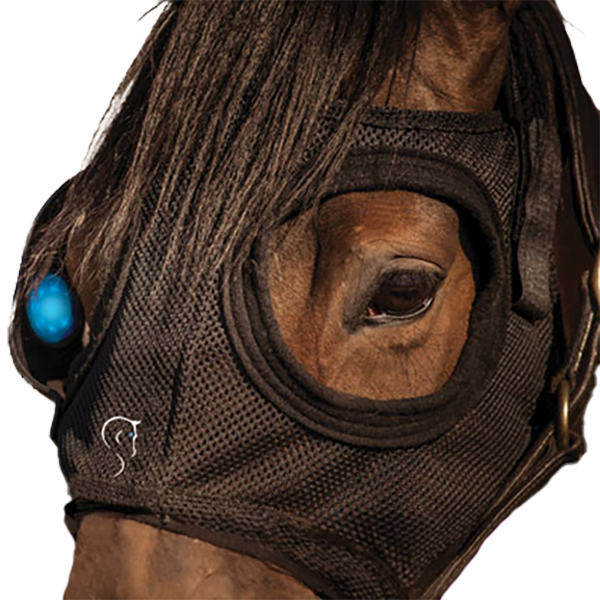Does Maternal Exposure to Blue Light Affect Foal Development at Maturity?
Because humans like to try and defy nature – January 1st being the “birthday” in the northern hemisphere, and only marginally better August 1st in the southern – we are often attempting to force earlier onset of cyclicity in the seasonally anestrus mare using lighting programs. Several years ago, a mask using blue light became commercially available as an alternative means to provide that phototropic stimulation (Equilume, Kildare, Ireland). While it was shown to work well for promoting early onset of cyclicity, questions arose about the effects of the blue light on the mare and developing fetus. These were largely explored by Lutzer et al. in prior research[1], and while the effects seen at birth were found to equilibrate over the first year of life, questions remained about longer-term effects. In work presented by most of the same team at ISER XIII, effects related to reproductive and later size development were investigated.
Foals from two groups of warmblood horses raised at the same facility were evaluated at 24 months of age. Twenty-six of these – 17 males and 9 females were from mares which had been exposed to blue light using the mask during pregnancy, while twenty-three were from control mares (14 males and 9 females) which had no such blue light exposure.
In addition to reproductive measurements, to determine if maternal exposure to blue light affected foals at maturity, body weight, height at withers and cannon bone circumference were evaluated. Reproductively, in males, testicular size and volume were determined using ultrasound; while in females, the reproductive tract was evaluated using rectal ultrasound, functional CL (corpus luteum) presence was determined using progesterone assay, and visible (antral) follicles counted.
No differences were seen between dam-exposed blue-light (DB) animals in height or body mass measurements. Similarly there was no difference seen between sexes.
Colts were found to have larger cannon bone circumference, but there was no difference in this measurement between DB and control groups. 13 of 17 DB colts had normal testicular location and size, and 11 of 14 control colts, with no statistical difference in volume seen between the groups where normal size was observed. Where abnormalities were observed, there was no statistical difference between groups (3 DB colts with unequal testicular size compared to 2 control animals; 1 DB animal with both testes too small; and 1 unilaterally cryptorchid in the control group).
In fillies, no sexual abnormalities were identified. Numerically there was a marginally higher percentage of fillies in the DB group with functional corpora lutea (8 of 9 females vs. 5 of 8 from the control group); while there was no statistical difference in the number of visible (antral) follicles between groups.
Notwithstanding the earlier research which found that blue LED light directed at one eye shortened gestational duration and influenced height and hair coat (but not the weight of foals at birth), this paper indicates that in this group any related long-term effects were absent. In response to the question “does blue light affect foal development at maturity?” the animals in this research demonstrated the answer to be “no” – body and genital tract development of the offspring of such mares at two years of age is not affected.
(Lutzer A, Murphy B, Aurich J, Gautier C, Aurich C, Nagel C. 2013. Blue LED light treatment of pregnant mares is not detrimental to gonadal development in their offspring. JEVS 152:104774)
References:
1: Lutzer A, Nagel C, Murphy BA, Aurich J, Wulf M, Gautier C, Aurich C. 2022. Effects of blue monochromatic light directed at one eye of pregnant horse mares on gestation, parturition and foal maturity. Domestic Animal Endocrinology 78:106675.




